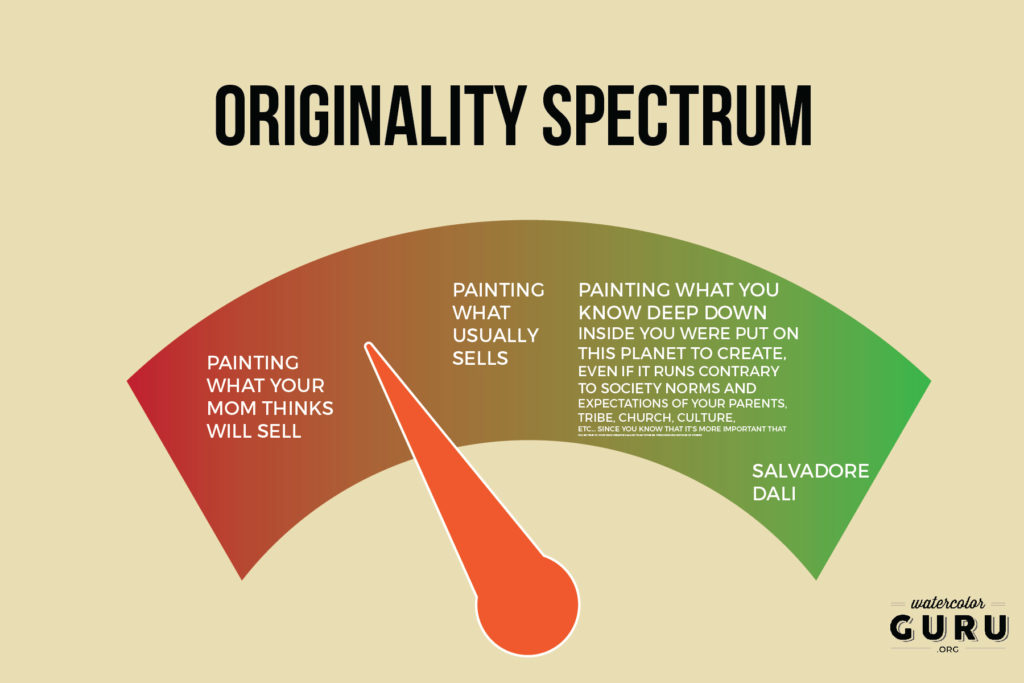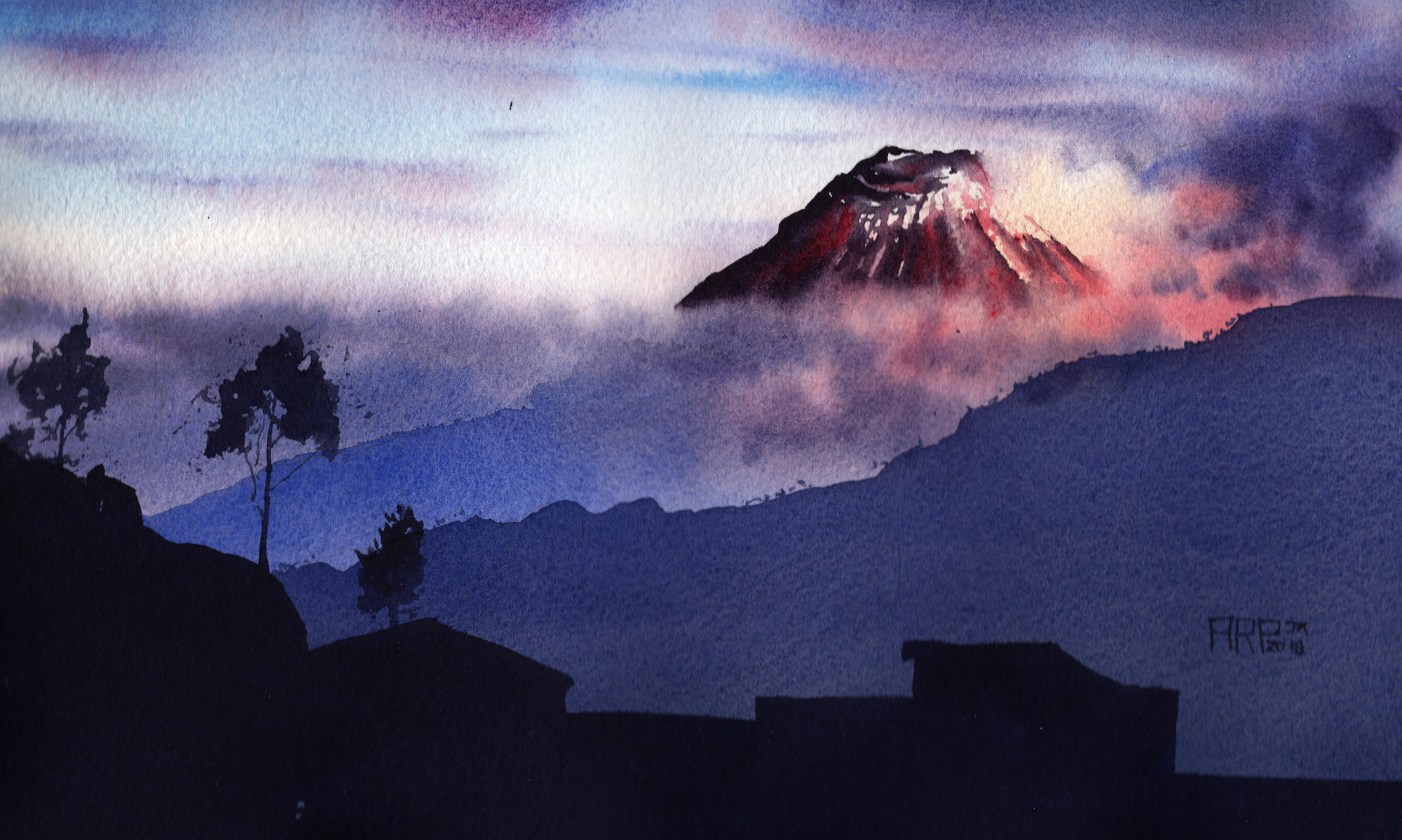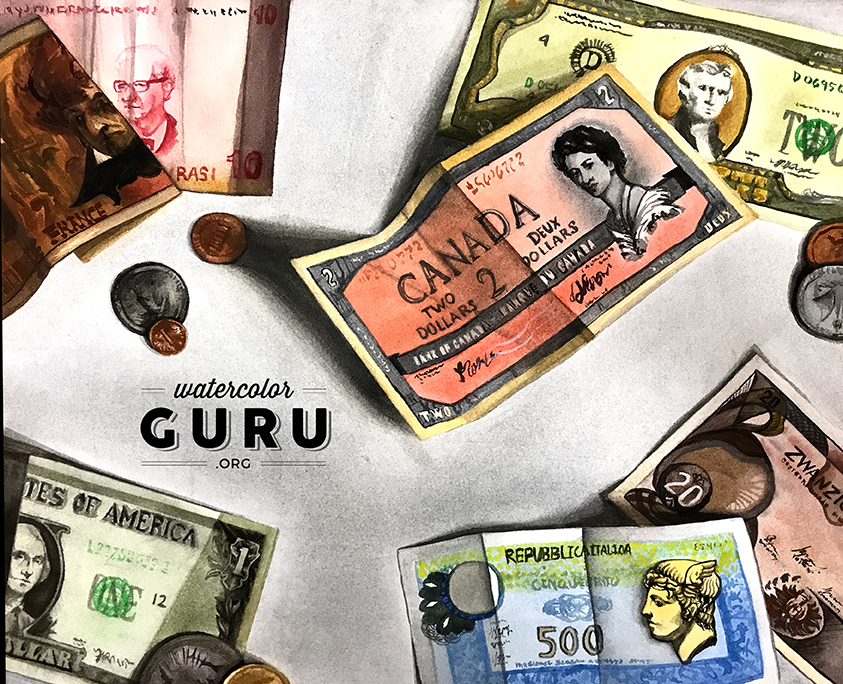There’s a cliche that we artists aren’t business minded; that we’re not good at math, not very organized. Oh, and we starve. Don’t forget the starving part.
And of course those things are all true of some people. However, of the numerous artists, illustrators and designers I’ve had the privilege of meeting, those who were able to support their families selling artwork were all highly organized and disciplined individuals. They had to be; art is a very difficult industry to make it in. It can be done though; I know at least one person who is a millionaire from selling his work.
But how do you make money? How do you sell work without coming off as sleazy or salesy? How do you network if you’re painfully shy, like me?
There’s no one answer. However, below are a few thoughts and principles I’ve collected from successful people. (Disclaimer: teaching is also a perfectly legitimate way to make money as an artist – in fact, it’s a privilege. However, for this article, we’re excluding teaching and focusing on selling work, especially to collectors.)
“Focus on what makes you different, not what makes you better.” – Mary Whyte.
As an artist, collectors are your guardian angels. They don’t buy paintings – they buy artists. They buy who you are, what makes you different. Buying your art is an investment in your future, the idea that you’ll grow and see your potential, and your art will be worth money someday.
In order to sell to this crowd, you need to be somewhere at the right end of the originality spectrum:

Never decide on a subject or technique by asking, “what would people buy?” This is a 100% guaranteed recipe for failure. Instead, ask “what kind of art do I like to look at?” and then start making that. It may not succeed for a while. Making art based on who you are is a gamble – what if who you are is terrible? However, this strategy will always be beneficial in the long run. Finding your own artistic voice, and what separates you from others, is a much better recipe for growth.
“Sow your seed in the morning and do not let your hand rest until the evening; for you do not know which will have success, whether this one or that one, or whether they will both do well.” – King Solomon of Israel, Ecclesiastes 11:6.
Let’s say you make two paintings. You’re very proud of them. You put one in a show. It doesn’t sell, but that’s okay, because you made good work. It comes home and goes into storage. The other is also at home, in storage. At this point, how many paintings are you going to sell?
That’s right. Zero.
Let’s 10x that scenario. You make twenty paintings. You apply for five shows, and four paintings are accepted. One of them sells. Ten paintings go on your website for sale, and the last six go into local coffee shops. One of those also sells.
At this point, you made twenty paintings and sold two, so a 10% conversion. What should you do now if you want to sell two more?
Make another twenty, obviously.
Even if only another two sell, that’s four sales, which might sound great if you are, in fact, starving. And it’s not like the other thirty-six were a waste of time – you can start applying to different contests and marketing those in other ways. Maybe you make an Etsy account and sell prints of your most popular paintings for $40 apiece, and you sell ten. That’s money in the bank.
It’s also not realistic to think that you’ll sell only the same percentage of paintings as your career progresses. In truth, as your personal brand grows, your network expands and your art improves, more and more opportunities will arise, and your sales will increase.
Pro Tip: Look for opportunities to do public demonstrations and workshops. Whenever you do, bring a box of prints and old work to sell for low, “clearance” prices. Get a Square card reader so you can accept credit cards. (https://squareup.com) Most often, people walking by won’t be interested in your new $10,000 masterpiece, but they might be down to buy a $10 sketch. Furthermore, workshop students are a perfect group to sell to – rather than having to generate excitement for your work, you have a group of people already there, loving your stuff. It’s a great opportunity to get rid of old work and make some extra cash. When your demonstration is over, ask if anybody wants what you painted and offer it for a reasonable price, like $50.

“Enter shows to win awards, not to sell paintings.” – Ryan Fox. Join a few watercolor societies and enter their shows. Most states in the US have their own watercolor society. Some of the shows have prizes of $1000 or more. Enter shows like that with the goal of winning prizes – believe it or not, that’s actually more likely than selling your painting. Of course, if you win an award and sell the painting, that’s even better, and it’s a great sign that you’re on the right track.
Here are the answers to a few frequently asked questions about the business aspect of art:
How do I set prices for my work?
Start low, but not ridiculously low – otherwise people won’t perceive value in your work. Brand yourself as a luxury item, not a commodity. I suggest making work that you can sell for $50-$100 at first. Once you sell a few things, you’ll get a feeling of what’s working and what isn’t.
Join craft shows and festivals and sell small things for petty cash: I like to have boxes of sketches that sell for $10 apiece. Then put up a few large scale, finished, framed paintings that run for hundreds of dollars. That will create a sense of the scale of your artistry, and people will be happy to own a small piece of it for ten or twenty dollars. The goal isn’t to sell the big pieces at these events, although that does sometimes happen. The goal is to increase the perceived value of your work.
Important note: raise your prices slowly. Don’t gouge or price yourself out of the market. When you reach a point that 50% of your paintings are selling as you make them, then the demand is sufficient to raise your prices about 10%. Never forget that art is a business, and is subject to the same laws of economics as every other business.
How does networking happen?
Personally, I have crushing social anxiety and hate small talk. I can’t just walk up to someone, introduce myself and create a business relationship. I don’t have that in me.
What I’ve found works better is volunteering at art events. Sign up to help hang a show; you’ll spend a day working with one or two other people, and you’ll get to know them well. Connection made. At a recent event, I volunteered to teach a seminar on how to photograph watercolors for the internet. Afterword, a number of people approached me and said how much they enjoyed it. More connections made.
Let friendships develop organically and look for quality, not quantity. Once you do, it will be easy to collaborate and create opportunities, because who doesn’t like doing things for their friends?
Key Takeaways:
- Focus on what makes you different, not what makes you better.
- Create perceived value by branding your work as a luxury, not a commodity.
- Increase your chances to sell by creating and promoting massive amounts of work.
- Remember that art is a business and is governed by the same rules as all businesses.
- First and last, always focus on mastering your craft.
That’s it folks! I hope this guide helped. If you know any budding artists who need business advice, send them this link. Let’s all get better together!

